The first of the Queen Elizabeth carriers early warning aircraft, Crowsnest fitted Merlin helicopters, have entered service according to the Royal Navy here.
The first Merlin ‘Crowsnest’ helicopter will now begin operational training, ahead of the maiden deployment of HMS Queen Elizabeth this spring.
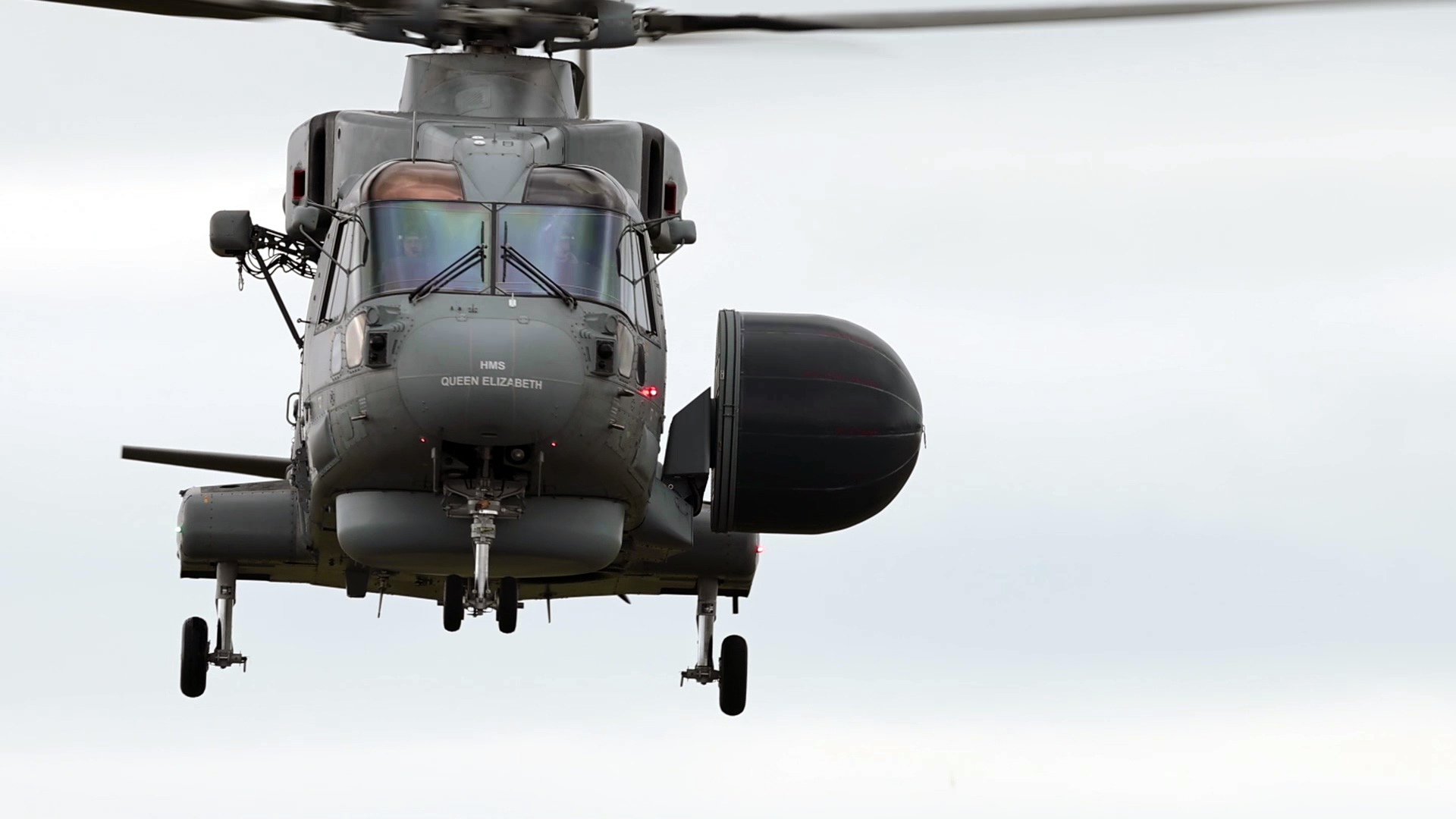
“The distinctive-looking helicopter – a large radar dome or ‘bag’ sticks out from the fuselage, earning the aircraft the affectionate nickname of ‘baggers’ – will provide airborne surveillance and the control of other aircraft (known as ASaC) in the carrier’s strike group.
The new generation of ‘baggers’ pick up the mantle of the Navy’s veteran Sea Kings of 849 Naval Air Squadron (now retired) – and like their predecessors will be based at Royal Naval Air Station Culdrose, which also provides anti-submarine Merlin aircraft to protect the Fleet. Training by aircrews to use the new system, which allows crews to conduct air and missile defence as well as strike command and control, has been underway since the autumn.”
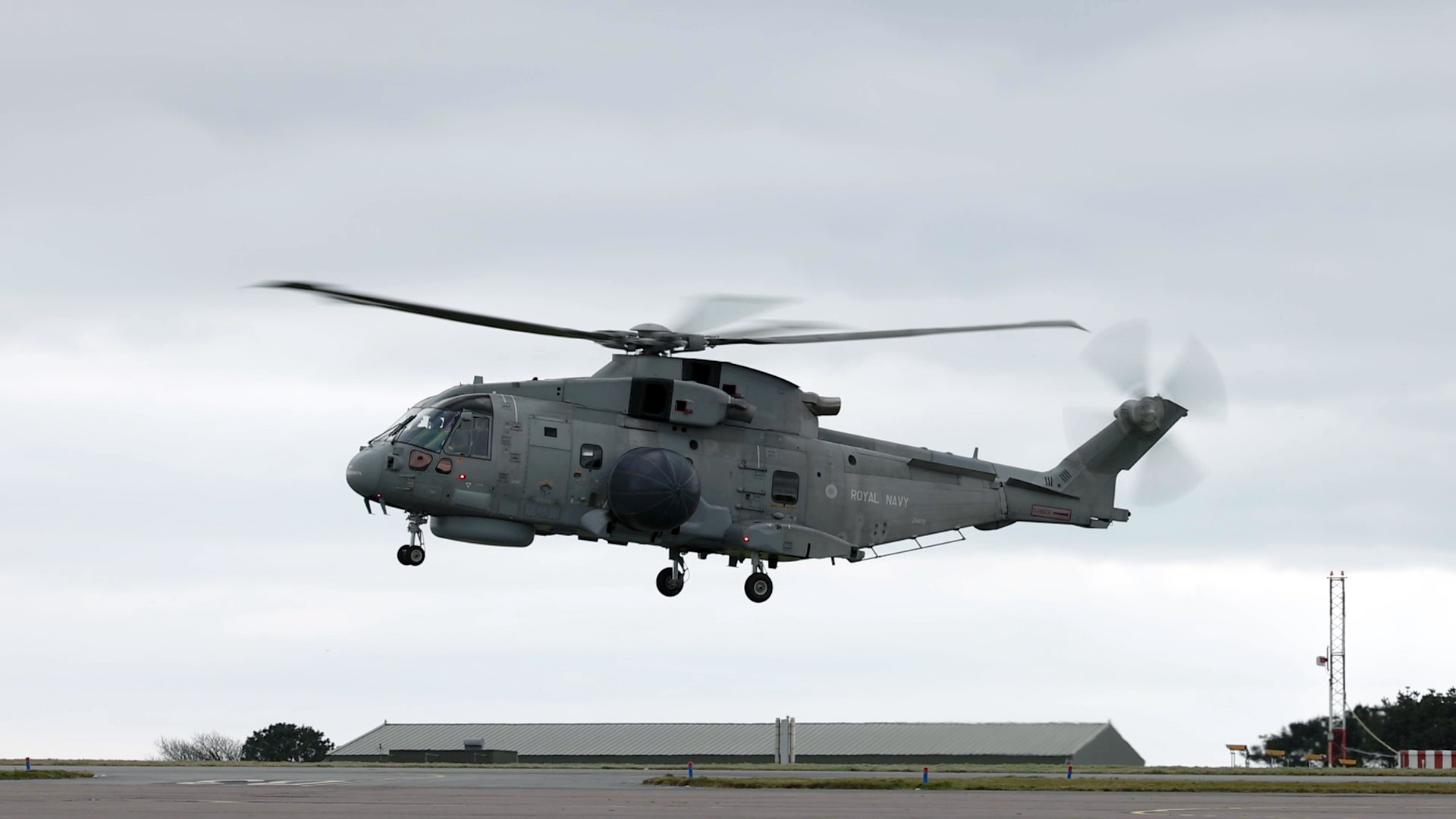
Captain Stuart Finn, the Commanding Officer of RNAS Culdrose, was quoted as saying:
“The delivery of this first aircraft at Culdrose represents an enormous amount of hard work, dedication and passion across the defence and industry enterprise. It marks a significant moment for the Royal Navy as we become a carrier task group navy capable of deploying around the world as a sovereign group or with our allies.
It is especially poignant that these aircraft are based here at Culdrose, the home of ‘the eyes of the fleet’, and we are proud of our association with airborne surveillance and control and before that, airborne early warning. These aircraft will work side by side with the rest of the Merlin Mk2 force to provide a world-class line of defence for our global navy, adding above water expertise to our already renowned submarine hunting skills.”


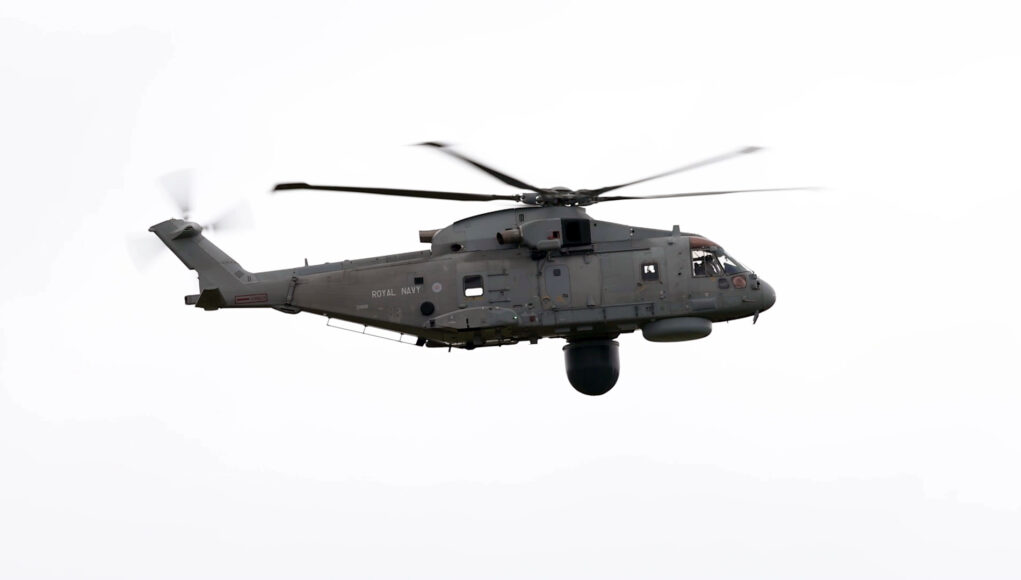


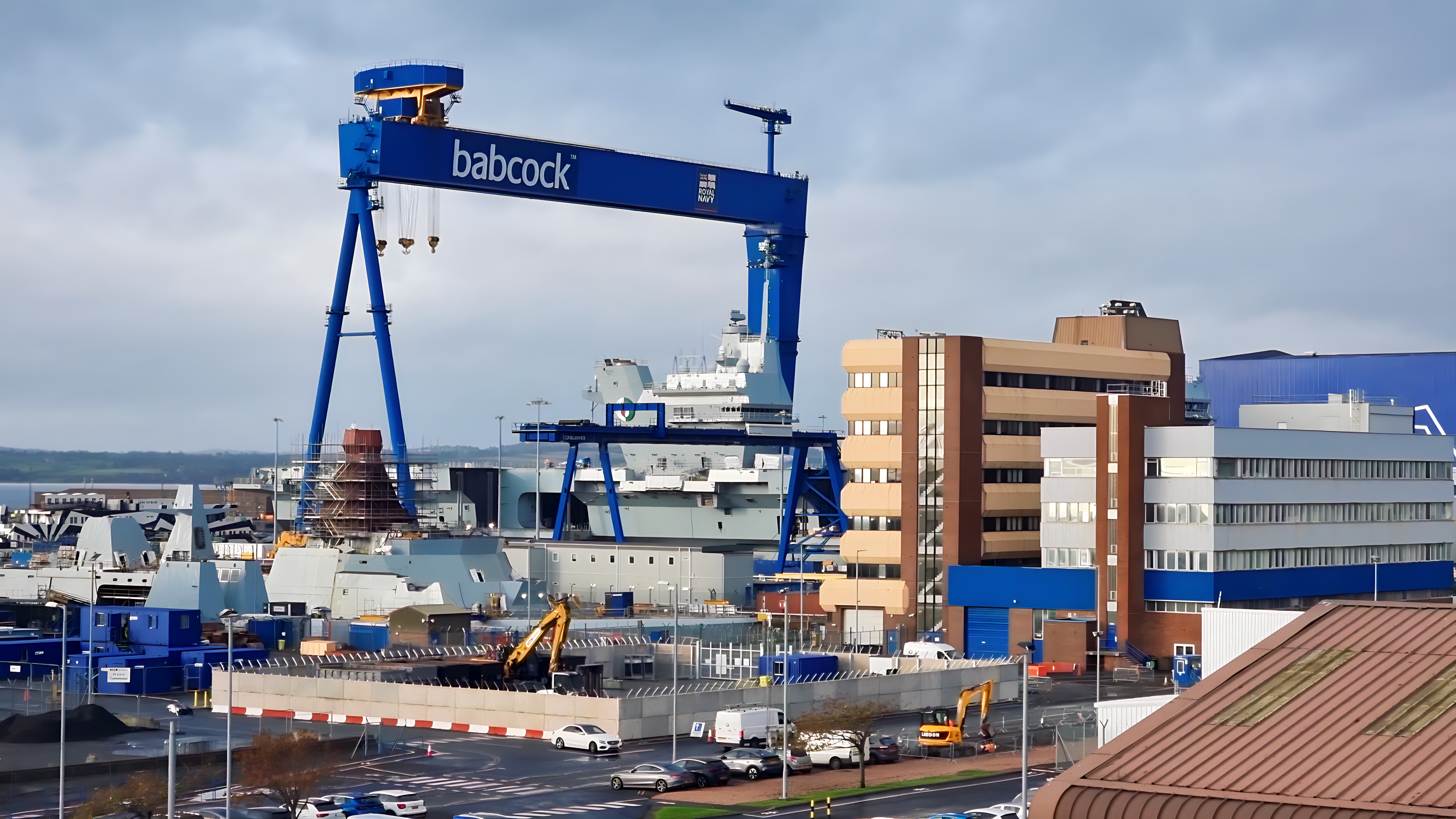






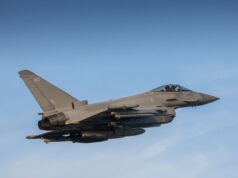

Good to hear there are in service ,well needed especially in the South China sea.
Just need a few more Merlins now. Otherwise there won’t be enough for the ASW frigates to have their main weapon, as well as cover all the training and reserve assets.
Second that! Good to see them entering service. There was a story knocking about a few months back that there were delays but things appear to have been sorted
I agree and also think we need to use the Merlin to replace the RAF Pumas too. They talk about a new future Medium Lift Helicopter but we already have one of the best ones in the world in the Merlin…
The RAF gave its Merlins to FAA – they were felt to be unsuitable for the medium transport role but excel in the martime role
Were they unsuitable or too costly?
Gp Capt Paterson said: “Today was the end of an era as we bid a final farewell to Merlin helicopters after almost 15 years of operating from RAF Benson.
“It is with some sadness that I watched the final aircraft depart and reflected on the success that the RAF has had with the Merlin.
—-
That does not seem to suggest they wanted to give them up…
I believe that it had several issues that the RAF didn’t like, one was its size, too big for what they needed, the other issue I believe was the aircraft availability due to the maintenance requirements to keep it flying.
I might well be wrong here, but that’s my understanding…
Yep, the maintenance cost was horrendous. We didn’t initially buy a spares package, so lots of cannibalization of parts and a drip feed of new parts. The other problem was that if any repairs were needed on the composite part of the airframe, it had to go back to Westland’s for a repair scheme, thus costing money and a further maintenance delay. Servicings used to take forever as you weren’t allowed to climb along the spine, but had to use a cherry picker. Iraq was their first use in a conflict, they didn’t do very well and had to get bailed out constantly by Chinooks. It was the same when they were sent to Afghan, predominantly U/S.
Once a lot of the teething issues had been sorted, it was an ok aircraft. As a battlefield helicopter it is crap. The ramp is too steep and it shares nearly the same footprint as a Chinook, but can lift bugger all. However, it is perhaps one of the smoothest helicopters to fly in, as it has active damping between the main rotor gearbox and fuselage. For the Navy, it is an excellent aircraft, as you can shut one of the three engines down in flight to conserve fuel. If you are an observer watching a screen for 4 to 5 hours, being in a smooth flying aircraft massively helps against personal fatigue.
The ex-Danish aircraft we bought, were a step up avionics wise. Their role in a peer vs peer conflict was to be combat search and rescue. However, that is a job now done by the Chinook. All battlefield support helicopter should be made from alloy, as it so much easier and quicker to repair. Bullet hole in the skin, bit of speedtape, until you put on a patch plate – simples.
I seem to remember something about the composite parts being difficult to repair now that you mention it, and some of the other pieces you mention. Can’t for the life of me remember where I read about it though, possibly over on STRN!!!!
Slightly off thread, will be interesting to see what is selected to replace the PUMA – AW149/189 perhaps, if the RN is that short of rotary lift, it wouldn’t be beyond the realms to add another 10-12 airframes for RN use, despite costs involved. More Merlin’s would be v good, but we don’t appear to be buying any, whereas we are buying a PUMA replacement, wishful thinking I know…..
They had a problem with tail rotor blade delamination. Required a complete new design and manufacturing process to fix.
Carbon composite doesn’t flex, like alloy. Crowsnest was creating a vibration that was cracking panels, hence the delay. USN/USMC are finding the same problem with C/C as this is affecting the FORD Class from launching anything with composite parts, it doesn’t like being shot n stopped dead, as the panels don’t flex. they stress n crack. latest is the conformal tanks on the hornets.
Thx Johan, good to know.
Quote …”The other problem was that if any repairs were needed on the composite part of the airframe, it had to go back to Westland’s for a repair scheme, thus costing money and a further maintenance delay”. I know what you mean as we had the same issues in the civil side in the 90’s with composite airframe repair (Dash8). I was speaking to some engineers recently and they say that the new aircraft have composite repair schemes and kits to allow them to do them in the hangar so it seems that all is needed is the manufacturer to agree and produce repair schemes that can be done on site.
it doesn’t really explain why they are suitable for the Jungly role though. They may fly from ships but surely in the respect of a beachhead and FOB, they still effectively become battlefield taxes which means the challenges the RAF had are likely to be re-encountered.
taxis
Excellent point, I’ve absolutely no idea why that might be, only that the RAF weren’t really keen on them, real reasons unknown!!!!!
At the time the Navy were desperate for a Jungly Sea King replacement. The MoD/Treasury wouldn’t allow them a new type of airframe. So the RAF were told to hand them over, as they were getting the fat tank Mk3s out of the shed finally and were being retrograded to an earlier avionics standard, which then got upgraded inline with the rest of the fleet. However, the Merlin HC3s were not marinized. So a modification program was used to convert them to folding head and tails. Then marinizing the aircraft’s electrical system.
Like I said, the aircraft is ok, but it is not a battlefield support helicopter, as its too easily damaged. Which then takes more time to repair.
Very true but that isn’t their primary role as compared to the army I guess. They will rarely be in a conflict zone in the way the Chinooks are. That said it might explain why no new builds have been obtained and I am not sure that the updated versions built by Leonado would fit in well anyway as they are so different unless they are still building the original Merlins too though I doubt it. I think it all suggests that while capable for naval use the aircraft is considered too problematic and perhaps too over designed in their view to want it for longer than the present timescale on a capability/maintenance/cost balance and something more capable and flexible preferred as soon as feasible. Composites generally are a bit of a deal with the devil big advantages in some areas but inevitable downsides too especially where damage can’t be easily avoided.
I regularly see Chinooks at Benson, and Pumas. Even I can recognise them. Saw a Chinook there doing acrobatics one year. Crazy. One year I saw the Lancaster arrowing over the river…rarely do I have a lump in my throat, but…
If the RAF gave up the best medium-lift platform UP, they would have been offered something. RAF has new kit chip on its shoulder.
Are we capable of producing more? I suspect the jigs are still available but I guess it would cost a small fortune to restart production.
Hi David,
If we were to restart production I think I’d take the opportunity to do an update on the design. At the top end of the scale would be to do a similar job on the Merlin as was done on the Lynx / Wildcat, although I think the most cost effective part of the update would be to re-engine to 2 engines. The 3 engine arrangement was forced on the designers through the lack of a sufficiently powerful engine, which now apparently exists.
I would also take to opportunity to add an air to surface missle capability of one sort or another…
Cheers CR
AW101s are in production for Norway so slotting in a variant for the UK would not be a problem although the build standard would be different to existing aircraft. There are also those that were surplus to the HM2 update programme.
I believe Poland are also being set up for production, following the cancellation of the Airbus contract.
Yes, forgot about that order.
there are about 8 airframes left over – heavily cannibalised and uneconomic to rebuild apparently – but I still think it would create the needed capacity without resorting to a new type and doubling up on supply chain etc
I don’t believe that, as the HM1 frames have been stripped of anything useful, so are basically now a blank canvas. If there was a will and some cash, they could be rebuilt as HM3s or as dedicated Crowsnest aircraft.
Is too bad the RN can’t have something like the E-2D to protect their CVs. I would guess that if/when the West does go head to head with the Chicoms the USN will be providing most of the AEW to the Brit CVs.
Look out for a UAV persistant surveillance system to replace Merlin in the 2030s.
Is there an operator on board the Merlin or does it beam the data back to QE?
Stealth UAV’s seem to be the way to go for this sort of capability if the data is being sent back to the ship for analysis. The obvious problem is the data can be jammed but then that would be no different to Crowsnest either.
The Merlin operates with a crew of 3: a pilot and two operators/observers.
Errr, isnt it two pilots up front, and operator rear? Lynx/Wildcat is pilot plus flobs, but Merlin is pilot and co-pilot I thought plus observer as the ASW kit operaforb(and I thought for AEW there was ar least one wdditional workstation)?
There are a couple of u tube videos available, and it definitely states one pilot and two in the back doing the work.
It’s stated in the very article that this page was written from:
“Each helicopter has a crew of three: two observers (mission and tactical specialists) and one pilot.”
https://www.royalnavy.mod.uk/news-and-latest-activity/news/2021/march/24/20210324-crowsnest-flies
Yet the above pictures show, pilot and copilot?
Two crew up front, two in the back to operate the AEW kit.
two in front one in the back – three total
I’m just giggling at the four different answers!
How about this making five ?
“Air Crew Trainers – These consist of a Cockpit Dynamic Simulator, a Cockpit Procedures Trainer, and three Rear-Crew Trainers.”
https://www.lockheedmartin.com/en-gb/products/merlin-helicopter.html
lets agree on pilot and observer in the front, and then 1 or 2 operators in the rear. Would a fighter control sit in the back or is that role back in the ship?
It has an operator, but very soon all data will go into the combat cloud for AI processing.
That’s not strictly true about jamming the datalink. The Merlin will use 2 types of datalink, a Link 16 and a Link 22. The aircraft won’t be operating that far from the carrier, possible no more than 50km. This means the people doing the jamming have to either use brute power to overwhelm the signal with white noise, or use a spoofing program that mimics the data. Either way they will need to be pretty close to the aircraft or between it and the carrier. Both Link 16 and 22 have a degree of electronic counter – countermeasures as they use data algorithms and frequency hopping within their given operating bands.
What is without doubt though, is that with the right equipment you can detect both Link 16 and 22 transmissions, and then from that triangulate the position of the aircraft and get a rough idea of where the carrier is. This is because both Link 16 and 22 use omni-directional antennas (transmit in all directions) rather than directional antennas like the F35’s multifunction advanced datalink (MADL). It uses electronic beamforming and steering. Therefore, the beam is very narrow and because its directional next to impossible to detect (unless you are between the sender and receiver).
Mind you, with the Searchwater lighting up the area like a beacon, there’s no need for expensive frequency spectrum analysers. Just a decent radar warning receiver, will (should) detect the Searchwater, before it can detect the aircraft its fitted to, due to the simple radar rule, i.e. transmitted signal needs to be reflected off object for it to be seen. So signal needs to travel twice as far.
Unmanned UAVs will be the future for carrier based organic AEW. The aircraft doesn’t need to be stealthy, its operating a radar throughout its time on station, so stealth won’t help. It will definitely need to be a digital AESA radar, as that has low probability of interception capabilities (stealth radar if you like) plus all the other adavantages it has over legacy radars. It can either use part of the radar for dedicated datalinking, or use a separate linear array for the datalink. The datalink will need to be preferably operating in the K band or higher (better bandwidth), as the data throughput will be incredibly high, as this will mostly be raw data for the “carrier” to use for the signal processing.
This is the one big difference between the Merlin and the E2 – where the Merlin is, the carrier is. At least the E2 can have a significant stand-off.
I suppose that if Samson radars are lighting up the sky it doesn’t make much difference.
It would be odd to use a “stealth” airframe for something that loiters whilst radiating like a beacon.
Linked to the request for info on EM launch systems, the navy is looking at UCAVs for strike and refuelling. I would have thought that using a UAV to replace Crowsnest would be a higher priority
Rushed into service before Big Lizzy deploys but also vital. Well done to all the people involved. Just goes to show that complicated systems can be hurried to the front line when people really get their heads together.
Was surprise .myself after reading there would not be ready for deployment with QE 2 ,but well done.?
Please please HMG. Never mind growing the fleet. How about a few more Merlin?
30 is ridiculously low considering they now also pick up the ASCS role.
Future Commando Force could do with some more helicopters too.
Will we even have enough helicopters to spread across all these new ships? And do you think they will get the armies Wildcats as they say about consolidating 4 types to 1?
I’m guessing the CSG and Type 26 will be prioritised for Merlin, and despite the scare stories re Wildcat they will be needed to populate the other escort types. Agree that Merlin numbers don’t provide sufficient cover for requirements.
They’re not planning that many new ships over and above existing. We can never have too many helicopters though! 815 has ships flights of a single helicopter, though I recall the Ice Patrol Ship has 2? Merlin force also provides for some T23.
Do ships flights remain with an escort all the time, or do they transfer to an active vessel like the CIWS do when a ship deploys?
No idea on army Wildcats. I’ll wait for more details as that report also described Chinooks being with the army so who knows WTF they were on about.
The RM already operate some ACC Wildcats as they are pooled in 1 AAC.
The last ice patrol ship had 2 wildcats. Protector has a pad but no hangar.
Ah. Had not has. Thanks for the correction. No hanger? Bit poor for an IPS??
No worries.
Yes, it’s a bit of a blow. The loss of the helicopter capacity has removed a level of support for the BAS and S&R activities. Protector has utilised drones to take on some of what was lost (survey/camera capacity), but it can’t compare to the capabilities of 2x Lynx HAS.3Ice. If memory serves me right, the flight deck of Protector is only certified for day landings.
Fortunately, RRS Sir David Attenborough has a hngar capable of fielding two helicopters. It goes some way to replacing what was lost, but you know me – I like things to be in the RN’s control!
HMS Endurance could carry 2x Lynx HAS.3Ice aircraft, with 4 airframes modified to the standard in total. One crashed on operations in Antarctica back in 2004 seriously injuring 3 of the 5 crew. I believe a fifth airframe was modified to the standard to replace it.
Flights including the specific aircraft are allocated to ships. Wafus disembark at the slightest opportunity and go back to their Shore base .So in a ship maintenance period the flight will go shore side and do the deep maintenance on the cab.
Flights do move around . When a ship enters refit they go somewhere else or act as stop gap fillers but when the ship re-emerges they go back.
Thanks for that answer.
I think the Merlin production line is closed but Wildcat is still open. Wildcat can be fitted with dipping sonar. It has nothing like the range and endurance of Merlin but would be better than nothing. Also it only carries 2 torpedos versus 4 for the Merlin.
What altitude and for how long does this stay on station?
Dont know the altitude, endurance is 4 to 5 hours.
Service ceiling is 4500m for merlin, which is adequate With a radar horizon of 171 miles
So if your target was at 10m above see level you have a radar detection range would be 171 miles.
if your target was at 250 meters above sea level ( not sure you would fly lower than that) radar detection range would be 212 miles.
171 miles is not a reliable figure – detection range is also driven by target RCS and sensitivity of the radar. .
Hi PCSB I was not talking about the sensitivity of the radar or RCS of the target. Just service ceilings and their impact on horizon. Sensitivity and RCS are secrets and to be honest not something you can have a really informed discussion on.
Thx. Definitely better than no AEW capability but in todays environment they really need something that flies much higher, with much great power output that can venture farther out than what a helo does. Those Chicom and Russian supersonic ASM are nasty and need to be detected as far out as possible not to mention future stealthy aircraft.
I think the RN knows and is hoping to fill that gap with UAVs at some point. Lots going on between the RAF and RN about how the loyal wingman concept could work for both services. Also the MOD asked industry for info on how emals could fit into the carriers for UAVs, alongside the ramp it seems. Hope for the future but yes Crowsnest is the bare minimum.
So with an ASM range of 150nm you might get just 62nm of time (about 5 mins) if the radar was pointing in that direction at the time before an attack is launched. And with just 4 on a QE you’d have to have at least 1 in the air 24/7. Maybe that could be done for 2 weeks.
Wouldn’t it be better to have a drone fleet for AAW? Perhaps a dozen Blackjacks, enough to keep 2 flying in a big circle round the fleet for months looking down at the horizon.
Radar line of sight at 4500m altitude is going to be at close to that 130 nautical miles at very low altitude ( 5 meters) , aircraft with be in the radars line of sight further out depending on altitude, about 150nm at 250 meters, remembering radar line of sight is not the same as optical line of sight ( it’s a lot further as electromagnetic waves refract in atmosphere ) . So if you can only detect a close to sea level object at 60nm that’s a function of your radar and the objects radar across section, not the service ceiling of the aircraft carrying your radar.
Say you had an aircraft that could fly your radar up to 11,250 meters ( the service ceiling of an E-2C Hawkeye) That gives you a radar horizon of around 235nm, but if your radar can only see the object at 65 nm the service ceiling will not be relevant.
So actually having more platforms would be better. A number of things many make the crows nest equipped merlins more operationally useful than raw service ceiling and speed suggest:
we have more merlin 2s than we would ever be able to order E-2C or other higher service ceiling platforms. The merlins can operate from a frigate and you could have frigates 100mile+ toward the threat with crows nest equipped merlins operating from them. The merlins can also operate from our amphibious assets so they could have their own early warning without needing a carrier.
Also the F35Bs themselves with their networked sensors will be a far better early warning platform than could be imagined when things like Hawkeye was first developed.
As you say add a few drones to the mix and your have a very flexible solution.
Shame they are not fitted with a more capable up-to-date Modern electronically scanned phased array radar, capable of true multi-mode function. Instead we have got a less capable radar that traces its design back to the 70/80s…. yes it has a new posh front end and is a bit more powerful in terms of processing and output but it is not state of the art by any measure.
I hope Chinese stealth is rubbish or Searchwater might not see an inbound raid!
At least we not have something which is an improvement over nothing…
Traced back to the Original Searchwater from Thorn EMI late 60’s!
F35 & Crownsnest will provide excellent coverage for the task group. Far superior to anything China can deploy from sea or land.
We had the option for a far better radar from Lockheed Martin, but they chose what they thought was the easiest and cheapest option……
My understanding is that you don’t need ASEA multi functionality. Crowsnest is not going to direct any missiles onto a target. Its job is to detect low level stationary and moving targets against sea clutter. Its very good at this.
High altitude targets will be detected at long range by the radars on the escorts.
https://ukdefencejournal.org.uk/rfa-faa-and-ran-team-up-for-major-drugs-must-in-the-arabian-sea/
AESA is not just about accuracy it is also about digital beam forming and resistance to jamming – not to mention low probability of intercept and multimode opperation.
it is also about detecting stealthy targets. Searchwater will be more prone to jamming, will advertise its location and only be able to detect stealth at short range. Not to mention that we sold China the radars from the canceled Nimrod AEW so they will have examples of the core system to find countermeasures for.
we should view Searchwater as a short term place holder for a modern system. I think we could use an AEW modified Radar 2 which is in development for Typhoon/Tempest. This would give us a modern AESA modern system theat tge Chinese have not got.
The Nimrod AEW radar was not based on the Thorn EMI Searchwater radar but on a totally different GEC Marconi system. Thorn EMI played no part in the AEW saga although at the time their radar was used very effectively in the Nimrod MR. Mk1 and II
I was a Searchwater tech on Nimrods, the radar was excellent for its age, but I remember heaving about its main computer, 32kg in weight for about 32kb of memory on individual cards the size of a VHS tape
Skymaster: Development of Searchwater AEW/LAST, combining the air-to-surface capability of the original Searchwater and the air-to-air capability of Searchwater AEW/LAST. Developed as the radar for Argus-2000 AEW&C system to be installed on British Aerospace Nimrod AEW3.[4] which was eventually cancelled. However, 6 complete Argus-2000 AEW&C systems plus two more Skymaster radar as spares were purchased by China in 1997 for 66 million US dollars.[5] The experienced gained from Skymaster/Argus-2000 program despite its eventual cancellation has been used in the modernization of other models of Searchwater radars.
Understand. Got to start with the basics though: pick up the subsonic sea skimmers. The new technology missiles are a problem even for US battle groups.
https://theaviationist.com/2021/01/29/chinese-h-6-bombers-heard-on-radio-confirming-orders-for-simulated-attack-on-u-s-aircraft-carrier-near-taiwan/
In high threat areas we are going to need F-35 combat air patrols. They do have state of the art radars but aren’t really designed for loitering.
Yes was thinking about that. What is the point crowsnest if a T45 can st a cricket ball half an ocean away.
Thanks for that.
Great news! Of course we need 192 of them on 24 carriers with 256 escorts and a shark with directed energy weapons emanating from its optical sensor array.
Wishful thinking
You forgot the space ships, I think we should have space ships.
I think the most important question that needs answering is How good is this at detecting supersonic cricket balls?
I remember that was a crucial metric when the type 45 first entered service.
Or how many football pitches in area can it scan…
And don’t forget that it flies at 4500 M which is X times higher than Nelson’s column or the old favorite…. X amount of London buses parked end to end
Yeah but, How many Sausages do they get through ?
Snorkers!
Supersonic balls….those were the days!
I kid you not, as part of my radar degree I used a speed tape covered cricket ball fired from an air cannon, for doing doppler measurement. The Uni limited the oomph I was allowed to fire it at, so top speed was sadly just under 200mph. I reckon it could of hit 300 if the pressure check valve was all the way out.
Or you could have used Jofra Archer I guess though I note he wasn’t very stealthy when breaking COVID regs.
You forgot the critical measurement: Olympic swimming pools!
I think one 1SL sated the number of Olympic swimming pools the hangar deck of QEC could accommodate!
How many baked bean cans can they carry….I would really like to know.
Way better than the England Openers….. !
FFBNW Slazenger V12?
Supersonic Cricket Balls, sounds like something the England Cricket team could do with.
Phew, that’s a relief. Seemed we’d deploy without AEW, which didn’t end well in ’82.
So does the pilot have a 30 degree head tilt to account for the CofG change? Don’t roast me, some humor applied!
A poor choice I think……Lockheed Martin came up with a panel arrangement that could be fitted any Merlin. This was deemed as far too sensible as the MOD wanted to hang on to their giant colostomy bag ?
Bring back the Gannet
I remember watching one folding itself up; what a marvel of British engineering!
And probably could land on the QE without traps if she going full steam into the wind. Great aircraft.
Found this on U-tube (ASW verion)….nice little video with the pilot talking about the beast!
3,400 HP, 310 MPH, bi-fold wings, coaxial propellers, oldest flyingTurboprop, Fairey Gannet – YouTube
Enjoyed that, thanks 🙂
Twin Mamba…. Ahead of it’s time in many ways.
The constant speed idea had its advantages back when turbines had slow spooling speeds….not sure that the fuel efficiency would pass muster these days though. I liked the comment that he’d use 50 gallons just to get airborne. That said it was a unique and imaginative solution to a problem, packed full of novel ideas, and it bloody worked! Fairey Aviation, a great British company!
At least its something which is better than nothing at all would have loved to have seen a buy of v-22 ospreys with the lockheed Martin palletised system which I think would give us increased capabilities in other areas as an added bonus
Saw one of these bimbling around at low level near Yeovil a couple of weeks ago. Could have been this very aircraft on constructor trials.
Cheers CR
Surprised it did not get mugged or Beaten over the head with bat.
Affectionately known as (tea)baggers?
The CrowsNest programme is 18 months behind schedule according to the NAO. The RN is really rushing it in to service for CSG21. Its seems like the deployment will in reality be more like sustained trails with one or two helo’s, than even an Initial Operational Capability (IOC). Full Operational Capability (FOC) is now scheduled for May 2023.
The issue with schedule a I that the people doing the initial planning on cutting complex technology platforms frankly are doing a lot to guess work regarding what effort, resource and time it will take to deliver the project m. That brisk guess is then taken as a fixed in stone set of milestones by ministers/senior managers who seem to ignore all historical examples of how lign projects actually take. Also this is not just a public sector issue, in the private sector plenty of projects go wrong and/or ate late but usually they don’t receive so much publicity as public sector money is not a lot stake.
Yeah seen that so many times myself, its like pushing a builder for a build completion date before you have the architects drawings, he’ll have no details so his timeline will be a best guess. Initial program length has to be indicative at best.
One main issue was the drag of the bag caused a vibration. Which in turn was causing failure of carbon fibre panels. Same issue with the sea king. BUT sea king made of Alloy.
What’s the endurance of this platform ? how many will it take to maintain 24 hr coverage in high threat areas? the platform will be up and down like a yo-yo between maintenance, re-crewing…im guessing you’d need about 5 serviceable platforms to maintain this readiness?
great question TB – what will a typical carrier deployment look like?
Any insight on this people?
This is excellent news! Even if it’s not a fully functioning system yet, it’s the right way forward.
And believe it or not they are ‘world class’. I get worried these days if that term isn’t actually used as I dread to think how bad it must be if it isn’t described as such.
I know that it would be better to have a better AEW platform on board but would it not be that in times of war a Poseidon or Wedgetail would be attached to the CSG?
With just 1 Wedgetail available at a given time and no means of refuelling it in flight that’s not guarantee. There’s also something to be said about the vulnerability of land bases.